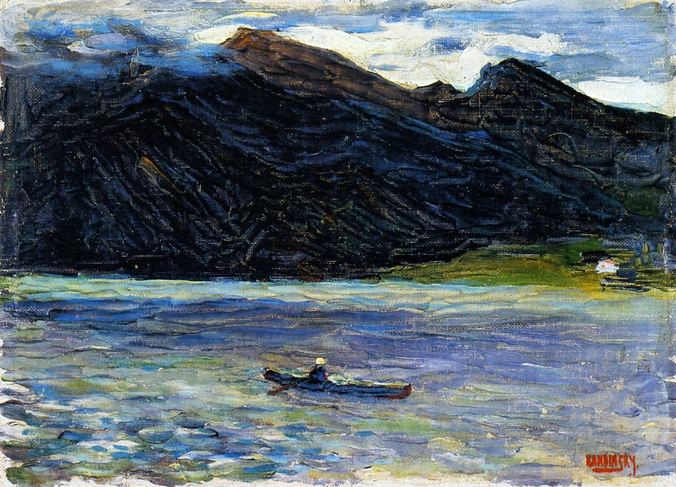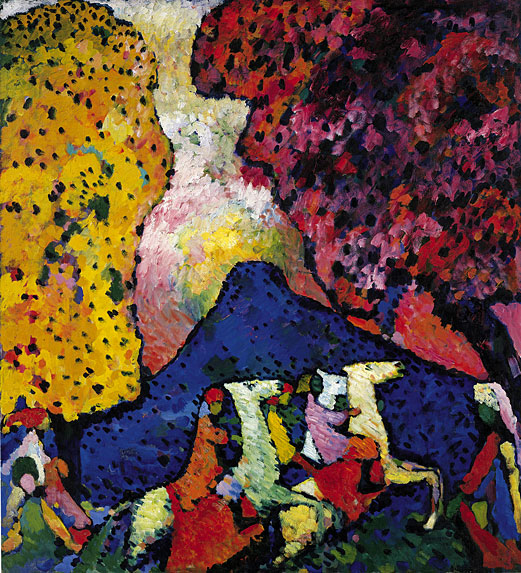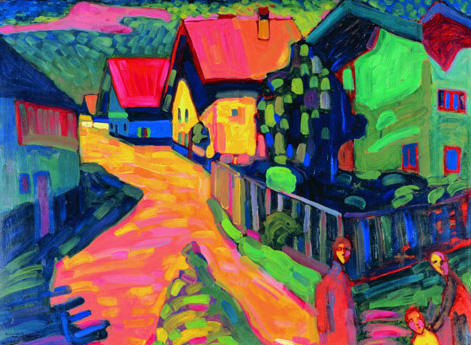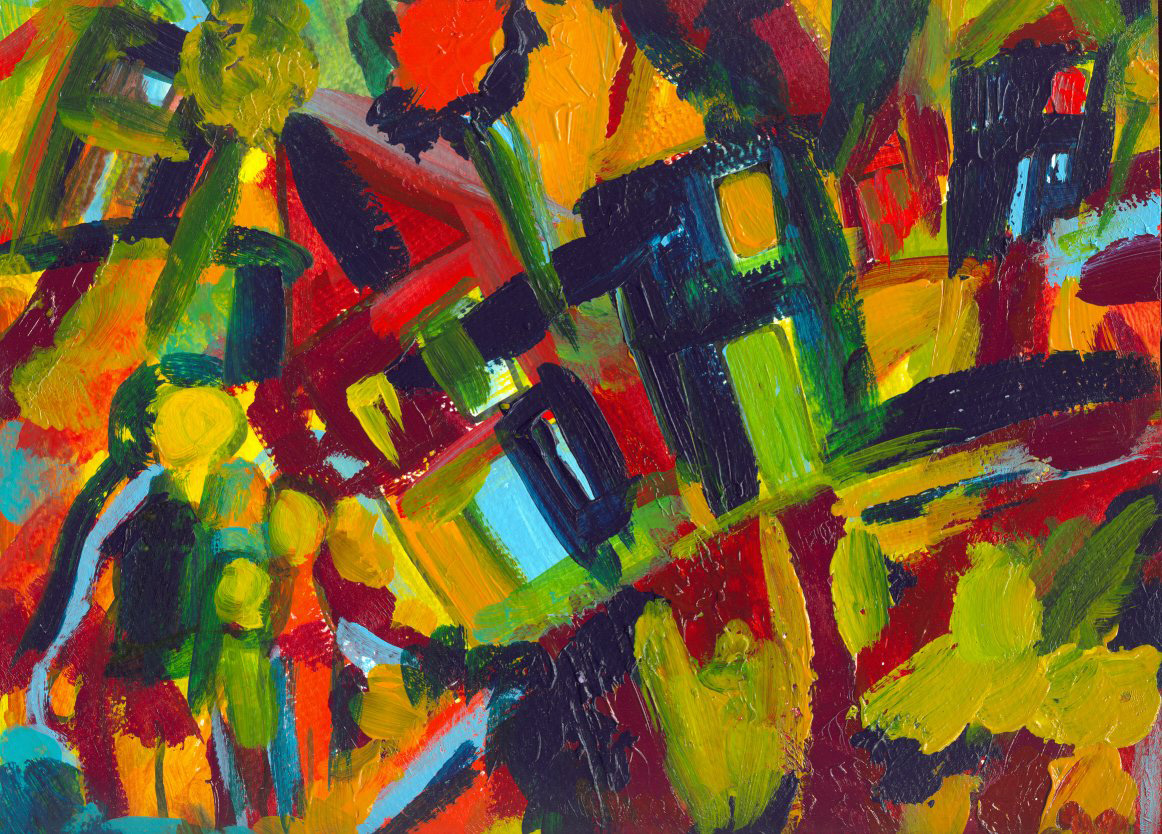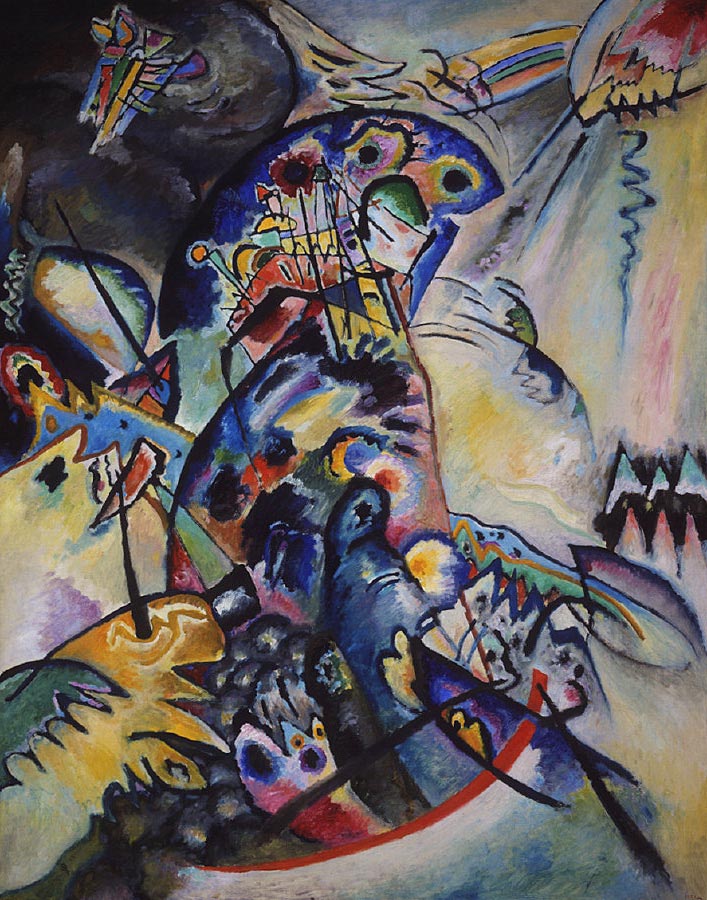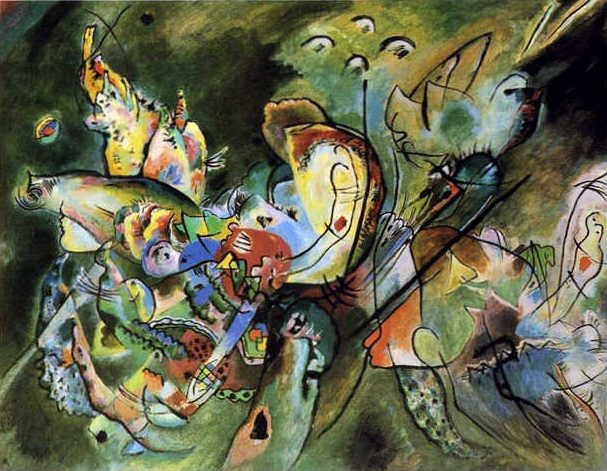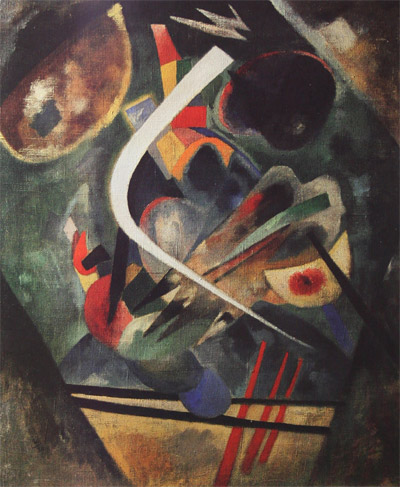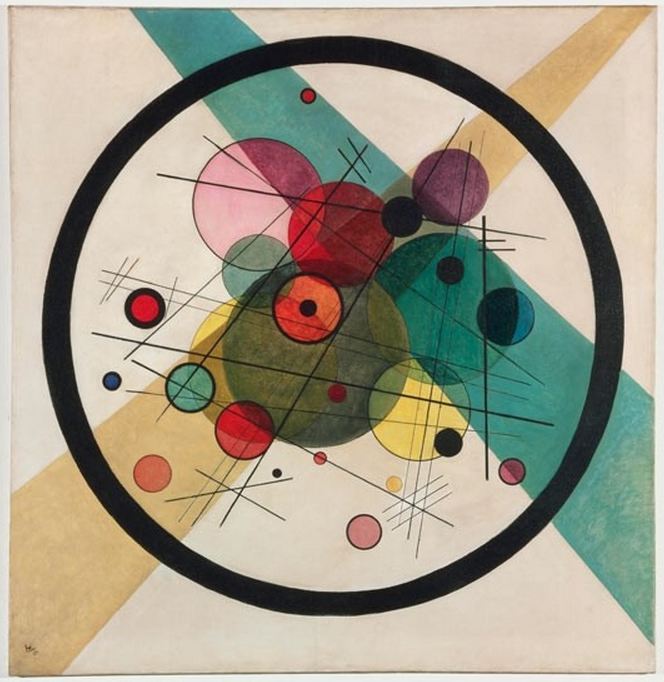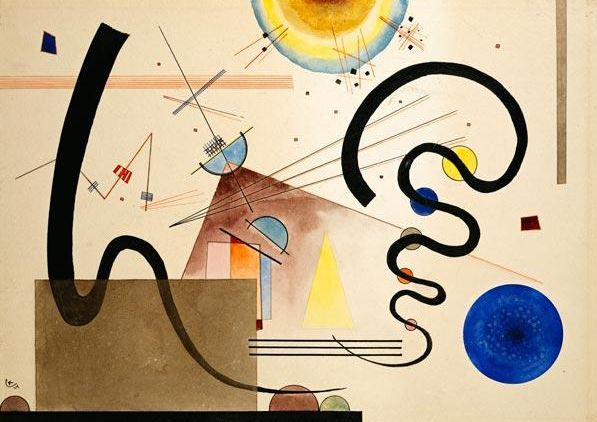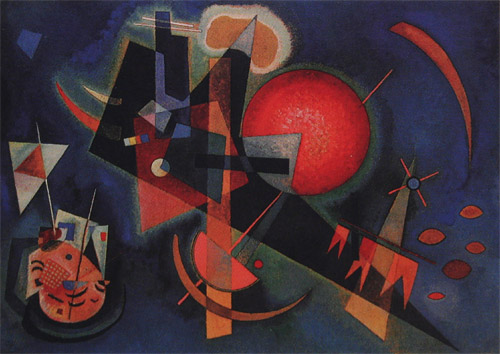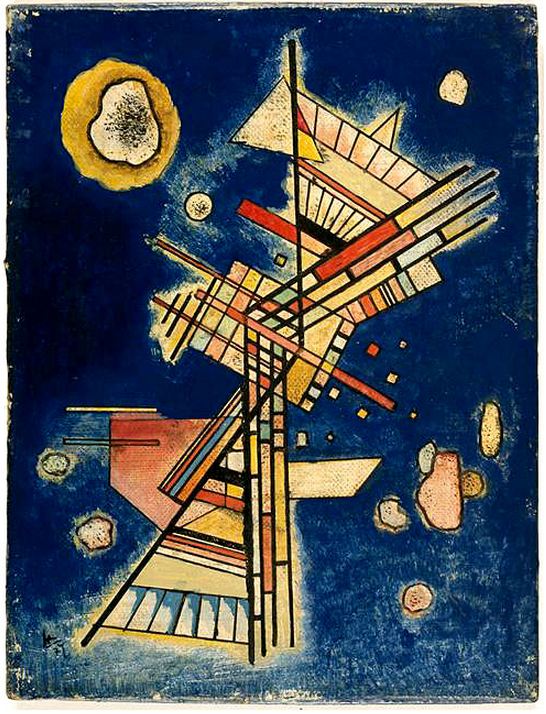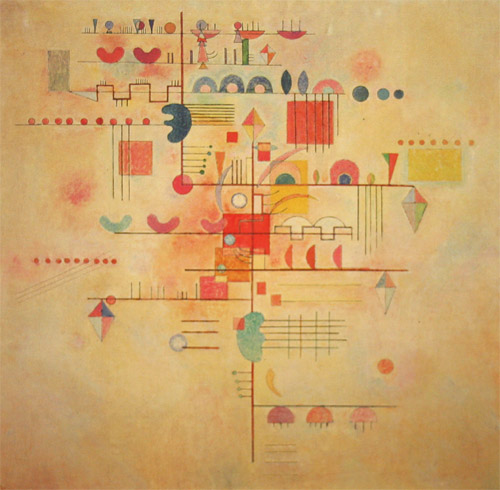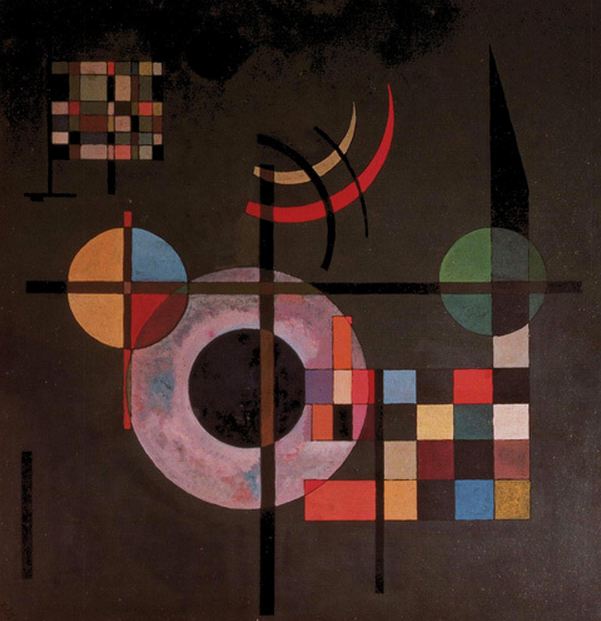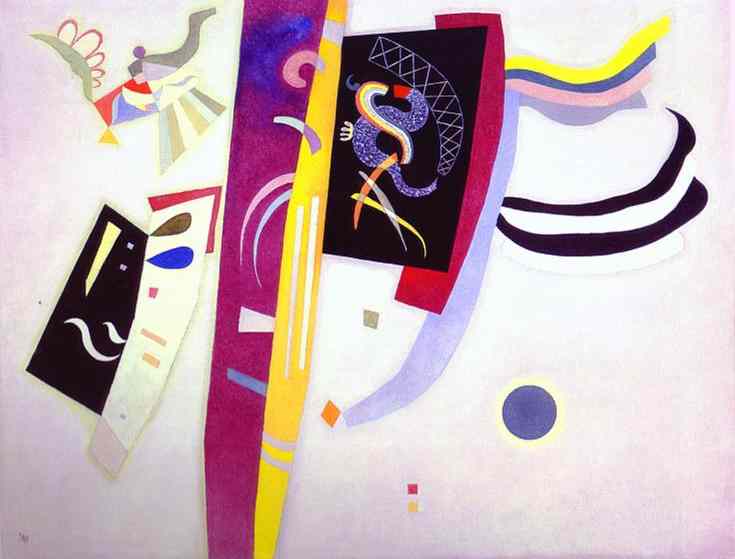There's something about art...I can spend hours in museums, streets, books exploring and reading about artists, art, and the varying explanations and philosophies. I like the way Helen Mirren described her love of art: "Just a note of a song can make you feel something and likewise a painting can make you feel the same thing." Ahhh, yes...an experience beyond words.
About Kandinsky's art, Mirren noted the seeming "chaos and randomness but organized. . . [an] incredible contradiction." When I see a Kandinsky I experience fascination, beauty, and geometry - I wanted to read more about his ideas, then I found his book: Concerning the Spiritual in Art. I should state from the outset that I have no formal training in art or art history - thus, I am just a girl trying to make sense of this book. [Source: All images of Kandinsky's art retrieved from WassilyKandinsky.net and are for noncommercial use.]
Background
Wassily Kandinsky (1866-1944) was born in Moscow, studied law and economics, and then turned at the age of 30 to a life of art and art theory. Early examples of his works include Kochel Lake with Boat (1902), Blue Mountain (1908/1909), Murnau Street with Women (1908), and 304 (1910).
Per WassilyKandinsky.net, Kandinsky experienced four movements throughout his work: 1911-1914 Blue Rider Period; 1914-1921 Returning to Russia; 1922-1933 Bauhaus, and 1934-1944 Biomorphic Abstraction.
1911-1914 Blue Rider Period
Untitled (1910) is considered Kandinsky's first abstract painting and by some as the first abstract painting in general. He wrote Concerning the Spiritual in Art in 1912.
One of my favorite pieces from this period.
1913 Color Study Squares With Concentric Circles
1914-1921 Returning to Russia
Some favorites from this period: Blue Crest (1917); Overcast (1917); and White Line (1920).
1922-1933 Bauhaus
This is my favorite period! Circles in a Circle (1923); Two Movements (1924); In Blue (1925); and Dark Freshness (1927).
1934 - 1944 Biomorphic Abstraction
Gentle Ascent (1934); Gravitation (1935); Orange Violet (1935)
Thoughts on Concerning the Spiritual in Art
I’ll have to say I feel like I have only gleaned the surface of Kandinsky’s meaning relative to the spiritual in art. What follows are some key themes that spoke to me:
Art offers revolutionary possibility and is the sphere turned to in time of societal stress, breakdown, and chaos. “When religion, science and morality are shaken. . . . when the outer supports threaten to fall, man turns his gaze from externals in on to himself. Literature, music and art are the first and most sensitive spheres in which this spiritual revolution makes itself felt” (p. 25).
Artists and their art connects humans to a deeper or transcendent meaning. “To send light into the darkness of men’s hearts – such is the duty of the artist” (citing Schumann, p. 16). “No other power can take the place of art. . . at times when the human soul is gaining greater strength, art will grow in power, the two are inextricably connected” (p. 63).
Art communicates – without the use of words. I’m increasingly tired of the primacy of words and speech acts as the preferred communication method – particularly when the rhetoric is 2D, hateful, and divisive. “At different points along the road are the different arts, saying what they are best able to say, and in the language (emphasis mine) which is peculiarly their own” (p. 31).
One’s hermeneutic must move beyond impression or observation (what the art is, what it depicts, or its specific configuration or construction) to an allowance for the art to communicate its meaning. “Our materialistic age has produced a type of spectator or ‘connoisseur,’ who is not content to put himself opposite a picture and let it say its own message. Instead of allowing the inner value of the picture to work. . . . his eye does not probe the outer expression to arrive at the inner meaning” (p. 58).
Kandinsky's Spiritual Triangle represents a societal and personal progression from solely material to spiritual concerns where the primary movement is influenced by artists and their work. “Painting is an art, and art is not vague production, transitory and isolated, but a power which be directed to the improvement and refinement of the human soul – to, in fact, the raising of the spiritual triangle” (p. 62).
In describing the triangle, Kandinsky spoke of an artist's Inner Need where : “(1) Every artist, as a creator, has something in him which calls for expression (this is the element of personality). (2) Every artist, as a child of his age, is compelled to express the spirit of his age (this is the element of style). (3) Every artist, as a servant of art, has to help the cause of art (this is the element of pure artistry [the top of the pyramid]” (p. 43). Prophets are those artists who move from art for art's sake extending the expression of the age's spirit or accepted forms of expression. Kandinsky noted that the spiritual prophets [artists], whom he also described as eccentric and solitary visionaries, are capable of “seeing beyond [each] segment” (pp. 18, 19). This seeing beyond creates a spiritual movement of transcendence beyond our physical and material condition, a movement with influential power relative to our collective meaning and experiences. Kandinsky used particularly derisive tones relative to Art for art’s sake, a retrogression from the spiritual: “The vulgar herd stroll through the rooms and pronounce the pictures ‘nice’ or ‘splendid’. . . . this neglect of inner meanings. . . . this vain squandering of artistic power is called ‘art for art’s sake’” (p. 16). Perhaps his tone is related to what his belief that humans “hunger consciously or, much more often, unconsciously for their corresponding spiritual food” (p. 18).
So What?
My curiosity about this notion of 'spiritual in art' arises from a bias that there's something about aesthetic experience that facilitates a moment where humans transcend individual interest solely captivated by the awe or beauty of the experience of art, music, theater, dance, etc. I've stood before works where people were like wow! and felt this sense that undivided attention was toward the wowness such that individual concerns were suspended but for a moment. Additionally, a few years ago I researched the worldview and leadership of Vaclav Havel a playwright who later became president of Czechoslovakia (now Czech Republic). Since I studied his life and learned about his 'spirituality' grounded in a sense of connectedness and responsibility - I am fascinated by the special role, power, and influence artists have in society. In Havel's case, a playwright and his cadre inspired the Velvet Revolution. Kandinsky's work provides a framework via the triangle to understand art and artist's importance beyond the material toward meaning, purpose and transcendence. I realize in using the word transcendence I'm not defining it - this too is a term I want to learn more about. Reading Kandinsky is but a starting point in this exploration - finally, this work was written early in Kandinsky's career - it would be good to read more of his ideas to further clarify definition and meaning of key constructs: spiritual, sacred, inner meaning, and inner need, for examples.
Sources
WassilyKandinsky.net Retrieved from http://www.wassilykandinsky.net/
Kandinsky, W., & Sadler, M.T.H. (2010). Concerning the spiritual in art. Readaclassic.com You can also download this book in PDF format.
Source: All images of Kandinsky's art retrieved from http://www.wassilykandinsky.net/ and are for noncommercial use.

